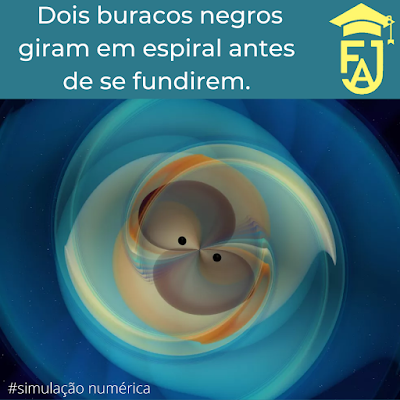Foi noticiado recentemente que dois buracos negros de massa intermediária (um com cerca de 85 massas solares, o outro com cerca de 65 massas solares) se fundiram em um único buraco negro. Esse fenômeno ocorreu a mais de 7 bilhões de anos-luz, mas liberou tanta energia que as ondas gravitacionais puderam ser detectadas aqui na Terra.
GW190521: A Binary Black Hole Merger with a Total Mass of 150 M⊙
R. Abbott et al. (LIGO Scientific Collaboration and Virgo Collaboration)
Phys. Rev. Lett. 125, 101102 – Published 2 September 2020.
On May 21, 2019 at 03:02:29 UTC Advanced LIGO and Advanced Virgo observed a short duration gravitational-wave signal, GW190521, with a three-detector network signal-to-noise ratio of 14.7, and an estimated false-alarm rate of 1 in 4900 yr using a search sensitive to generic transients. If GW190521 is from a quasicircular binary inspiral, then the detected signal is consistent with the merger of two black holes with masses of 85 M and 66 M. We infer that the primary black hole mass lies within the gap produced by (pulsational) pair-instability supernova processes, with only a 0.32\% probability of being below 65 M. We calculate the mass of the remnant to be 142 M, which can be considered an intermediate mass black hole (IMBH). The luminosity distance of the source is 5.3 Gpc, corresponding to a redshift of 0.82. The inferred rate of mergers similar to GW190521 is 0.13 $Gpc^{−3}yr^{−1}$.
Abstract do artigo (link aqui):


Nenhum comentário:
Postar um comentário